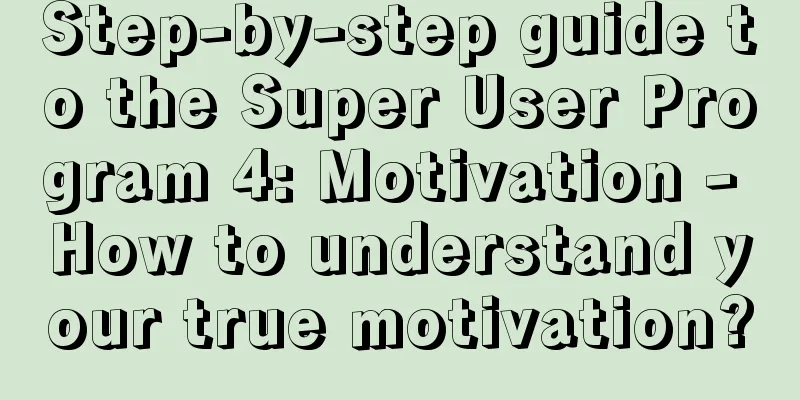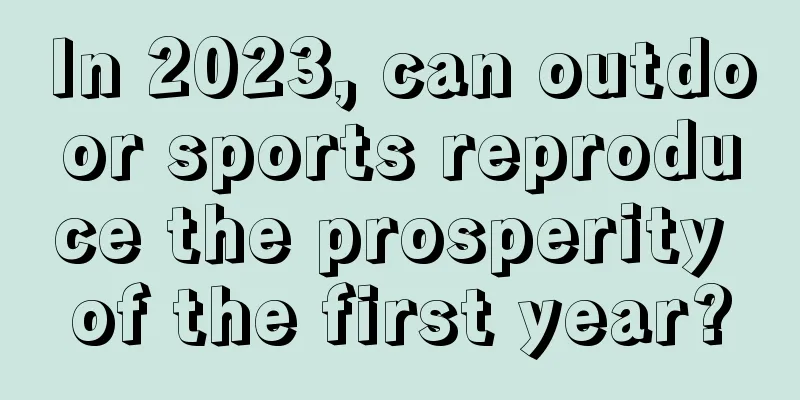Step-by-step guide to the Super User Program 4: Motivation - How to understand your true motivation?

Every community has a group of leaders, opinion leaders, who are more vocal, more visible, more active or more productive than other users. The Super User Program allows you to harness the knowledge, energy, and skills of these top performers to benefit your community or brand. In this series, many successful and unsuccessful super affiliate plays are analyzed and studied to help you master the information you need to design, build, and run your own successful program. This article is Chapter 4: Motivation. How to understand the real motivations of “super users”? One of the most important things you can do to make your Super User Program a success is to incentivize members to join. What makes them want to be a part of your program? If you can answer this question, you can create and align incentives to keep these super users highly engaged, valued, and proud to represent your brand. 01 What makes members want to be part of the program?Self-determination theory believes that peak motivation is reached when three needs are met: competence, autonomy, and relatedness. We can further break it down: Education (capabilities). Are people facing challenges in their lives or careers that you can help them address through training, certification, or product knowledge? Experience (status or autonomy). Do they need support to build their own business? Can you provide them with opportunities to contribute in different ways to build their own brand? Connections (social identity or relatedness). Is it important to feel like you are part of a “secret society” or a close-knit group? Do people want to give back to those who have supported them during difficult times? Go a step further – do people want to connect with your brand? The tricky thing here is that members don’t always know what their true motivations are . Even if they know, they may not be willing to tell you the truth— “I do this because it feels good to give back” is easier to say than “I’m motivated by status.” Note: Present program membership as a reward, not a job. If people feel like it’s a job, they’ll disengage when other things take priority.
02 Different groups of people have different motivations and they changeDifferent groups have different motivations, and those motivations may change with experience. You can make educated inferences about members based on psychographics and by observing their behavior. For example, members of the technical community are often motivated by competition. They want to be the best — to have the best product knowledge, or to write the best code. They are often looking for a new job or career advancement and want to be seen as industry leaders. Providing them with a platform to showcase their knowledge and skills is a powerful motivator. For others, it may be an opportunity to learn about a product or service that is important to them. For someone who writes a technology or product blog, getting the inside scoop or being the first to know can be very appealing.
03 Some cases and user needsLet's look at the needs of different people: In the case of open source communities, public recognition of members' contributions is an incentive.
Part of us likes to feel like we’re part of a team or a strong community. The potential for friendship, business networking and other relationships are other motivations. Many super users are passionate about the role because they feel like they are part of a family or part of a brand.
Some members may want a strong connection to the brand and gain real satisfaction from participating in the community.
The point, therefore, is that different members have different motivations and it is important to identify those motivations for each project. Some want to be seen as thought leaders, trendsetters, top sellers/experts, they enjoy helping others, or they want to help shape the future of Vinted through direct contributions to others and our team. Additionally, there are many members who simply enjoy buying/selling on the platform, and volunteering in some way comes naturally to them as it means they can spend more time doing activities they already love. Erica Kuhl points out two main motivations for Salesforce MVP program members: 1. Access : They want to be seen as “smarter than the average person” (because they are a consulting firm, or they work at a corporate firm and want to get a promotion) 2. Recognition : They want front row seats at Salesforce events, badges to display on their blogs, LinkedIn profiles, and business cards, and they just want to be recognized for their knowledge. Similarly, members of the Yelp Elite Squad say being part of them is like joining a "secret society." "Now that I'm finally a gold elite, certain parties are held just for us. It makes me feel like a VIP celebrity in San Francisco." 04 How can we understand the true motivations of members?Imagine asking a Super Member, "Are you here to improve your social status?" They would definitely say "no". So how do you learn what your members are really motivated by? Don’t ask them directly— ask them other questions and see what you can extract from their answers. Let's see what kind of questions can quickly get us to the truth: 1) How did you hear about this program? Did they hear someone else talk about the program on another site? If so, find out what made the idea sound appealing. If they talked about specific rewards, that will help you gain insight into motivation. 2) Why are you interested in this program? If the answer is "to give back," try to dig deeper. What do they do? Is there some connection to the program? 3) How would you like to get involved? These responses may give you some idea of the types of things they are interested in, which may indicate their motivations. For example, do they want to organize meetups (i.e. is networking one of the motivations?) 4) What suggestions do you have for the program? See the Google example on the left. If the answer is about publicity, then status is likely their motivation. 5) Why do you think you are a good fit for this program? Responses that list a skill set may indicate a need for exposure (they want others to know what they are good at) or education (they are interested in learning more/getting information or products.) 6) Tell us how you would describe [brand] to your colleagues/community. You can glean information from the tone of the response. If they come off as overly bombastic or enthusiastic, exposure or association with the brand could be a trigger. Finally, remember that user motivations may change over time. Ask for feedback – Are your members excited about the same things now as they were when they joined a year ago? Regular reviews ensure that the plan is running as effectively as possible. Ask members the same questions as you did during your first interview and see how their responses differ. You can record these questions in your plan documents. summary
Author: Brand Yuan, WeChat public account: Brand Yuan (ID: brand-yuan) |
<<: 6 popular article templates on Xiaohongshu|Just follow them [Industry templates V1.0]
>>: Brand No. 1: How to use verbs to call to action
Recommend
With a total of 100,000 private domain users in one year and a repurchase rate of 38%, how does Daily Black Chocolate conduct private domain operations?
How can brands do a good job in private domain ope...
Building a business prediction model is a great method
In data analysis and business decision-making, bui...
Can I re-register if I failed to register with Shopee? What information do I need?
Now, whether it is domestic or foreign e-commerce,...
How to do cross-border e-commerce with an independent website? What aspects need to be done well?
Now the development of cross-border e-commerce pla...
E-commerce platforms are eyeing billions of subsidies, are low prices their eternal killer weapon?
JD.com will officially launch the "10 billion...
A video received 13 million likes. Is it a good start for Douyin creators?
What new developments will there be in the new yea...
How to apply for a mobile payment virtual card? How to use it?
With the rapid development of technology, mobile p...
Xiaohongshu marketing methodology for wine brands, increasing sales by 40% (6,000 words)
Recently, the rise of low-alcohol wine on Xiaohong...
Can rice be sold through cross-border e-commerce? How to choose categories for cross-border e-commerce?
With the development of globalization and people&#...
What products are suitable for small Amazon sellers to sell? Why does Amazon not recommend selling mobile phone cases?
On Amazon, the world's largest e-commerce plat...
Ten thousand words of practical information! Explain to you once and for all how to formulate the product scheduling strategy for the video account live broadcast room
This article analyzes in detail the specific metho...
What do you think about the "common prosperity" that Bilibili is about to give to UP masters?
B station’s incentive plan has been adjusted. This...
Douyin vs Xiaohongshu: In-depth analysis of the differences in the 5A marketing models of the two platforms
The 5A models of Douyin and Xiaohongshu are obviou...
10 thoughts on recent changes
One minute of thinking is worth an hour of nagging...
When AIGC meets marketing, what changes will it bring to the marketing logic of consumer brands?
As the world's leading artificial intelligence...





![[User Growth] Channel Growth SOP: Easily implement internal channel efficiency review and analysis](/upload/images/67e75e0375669.webp)



